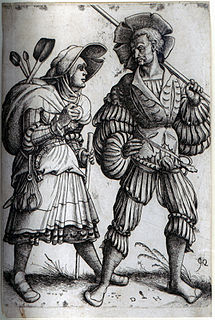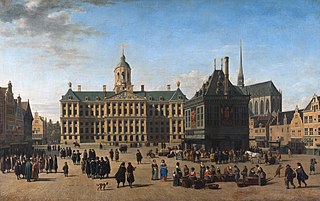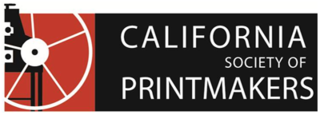This article has multiple issues. Please help improve it or discuss these issues on the talk page . (Learn how and when to remove these template messages) (Learn how and when to remove this template message)
|
Martin Levine (born 14 May 1945 in New York City) [1] is an American artist.

The City of New York, usually called either New York City (NYC) or simply New York (NY), is the most populous city in the United States. With an estimated 2017 population of 8,622,698 distributed over a land area of about 302.6 square miles (784 km2), New York is also the most densely populated major city in the United States. Located at the southern tip of the state of New York, the city is the center of the New York metropolitan area, the largest metropolitan area in the world by urban landmass and one of the world's most populous megacities, with an estimated 20,320,876 people in its 2017 Metropolitan Statistical Area and 23,876,155 residents in its Combined Statistical Area. A global power city, New York City has been described as the cultural, financial, and media capital of the world, and exerts a significant impact upon commerce, entertainment, research, technology, education, politics, tourism, art, fashion, and sports. The city's fast pace has inspired the term New York minute. Home to the headquarters of the United Nations, New York is an important center for international diplomacy.
Levine works mainly in etching and lithography, depicting realistically rendered cityscapes. His work has been included extensively in both international and American invitational and juried exhibitions, and his prints and drawings are in many important collections, including the Brooklyn Museum, the Museum of Fine Arts in Boston, the Art Institute of Chicago, and the Victoria and Albert Museum in London. He has been on the jury for numerous international exhibitions, including Biennials in Varna, Bulgaria; Lodz, Poland; Belgrade, Serbia; and Bristol, England. He is the former president of the Society of American Graphic Artists and was elected to the National Academy of Design in 1997. [2] He has taught at the State University of New York at Stony Brook since 1986.

Etching is traditionally the process of using strong acid or mordant to cut into the unprotected parts of a metal surface to create a design in intaglio (incised) in the metal. In modern manufacturing, other chemicals may be used on other types of material. As a method of printmaking, it is, along with engraving, the most important technique for old master prints, and remains in wide use today. In a number of modern variants such as microfabrication etching and photochemical milling it is a crucial technique in much modern technology, including circuit boards.

Lithography is a method of printing originally based on the immiscibility of oil and water. The printing is from a stone or a metal plate with a smooth surface. It was invented in 1796 by German author and actor Alois Senefelder as a cheap method of publishing theatrical works. Lithography can be used to print text or artwork onto paper or other suitable material.

In the visual arts a cityscape is an artistic representation, such as a painting, drawing, print or photograph, of the physical aspects of a city or urban area. It is the urban equivalent of a landscape. Townscape is roughly synonymous with cityscape, though it implies the same difference in urban size and density implicit in the difference between the words city and town. In urban design the terms refer to the configuration of built forms and interstitial space.
Levine has received over 120 national and international awards, notably at the Society of American Graphic Artists National Print Exhibition; National Academy of Design Annual Exhibition; Bienal de Ibiza Grafic Internacional Exhibition, Spain; and the Library of Congress National Exhibition of Prints. He was a recipient of a National Endowment for the Arts Fellowship in Printmaking in 1976. [3]

Spain, officially the Kingdom of Spain, is a country mostly located in Europe. Its continental European territory is situated on the Iberian Peninsula. Its territory also includes two archipelagoes: the Canary Islands off the coast of Africa, and the Balearic Islands in the Mediterranean Sea. The African enclaves of Ceuta, Melilla, and Peñón de Vélez de la Gomera make Spain the only European country to have a physical border with an African country (Morocco). Several small islands in the Alboran Sea are also part of Spanish territory. The country's mainland is bordered to the south and east by the Mediterranean Sea except for a small land boundary with Gibraltar; to the north and northeast by France, Andorra, and the Bay of Biscay; and to the west and northwest by Portugal and the Atlantic Ocean.

The National Endowment for the Arts (NEA) is an independent agency of the United States federal government that offers support and funding for projects exhibiting artistic excellence. It was created by an act of the U.S. Congress in 1965 as an independent agency of the federal government. The NEA has its offices in Washington, D.C. It was awarded Tony Honors for Excellence in Theatre in 1995, as well as the Special Tony Award in 2016.









